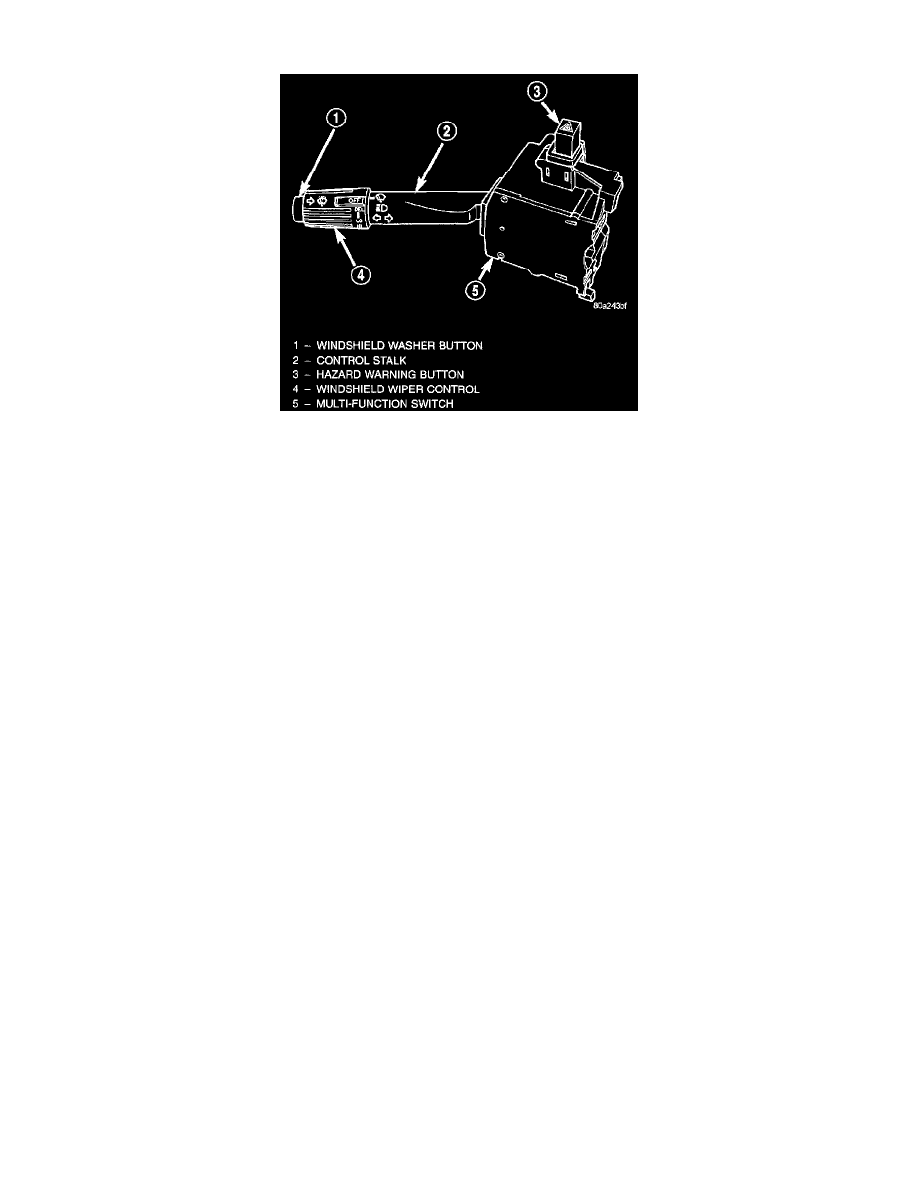RAM 2500 Truck 4WD V10-8.0L VIN W HDC (2000)

Turn Signal Switch: Description and Operation
Multi-Function Switch
The turn signal and hazard warning switches are integral to the multi-function switch unit, which is secured to the left side of the steering column. The
only visible parts of the multi-function switch are the control stalk that extends from the left side of the steering column, and the hazard warning switch
push button that protrudes from the top of the steering column. The multi-function switch control stalk has both nomenclature and international control
symbols on it, which identify its many functions. The hazard warning switch push button is identified with a double triangle, which is the international
control symbol for hazard warning. The remainder of the multi-function switch is concealed beneath the steering column shrouds.
The multi-function switch also contains circuitry for the following functions:
-
Headlamp beam selection
-
Headlamp optical horn
-
Windshield wipers
-
Windshield washers.
The information contained in this addresses only the multi-function switch turn signal and hazard warning functions.For information relative to the other
systems that are controlled by and circuits that are integral to the multi-function switch. However, the turn signal and hazard warning switches cannot be
repaired. If these switches or any other circuit or component of the multi-function switch unit is faulty or damaged, the entire multi-function switch unit
must be replaced.
The multi-function switch control stalk that extends from the left side of the steering column just below the steering wheel is moved up or down to
activate the turn signal switch. When the control stalk is moved in the upward direction, the right turn signal switch circuitry is activated; and, when the
control stalk is moved in the downward direction, the left turn signal switch circuitry is activated. The turn signal switch has a detent position in each
direction that provides turn signals with automatic cancellation, and an intermediate momentary position in each direction that provides turn signals only
until the multi-function switch control stalk is released.
When the turn signal switch is in a detent position, it is turned off by one of two turn signal cancelling cam lobes that are integral to the rotor of the
clockspring mechanism. Turning the steering wheel causes the turn signal cancelling cam lobes to contact a cancel actuator in the multi-function switch,
and the turn signal switch automatically returns to the off position.
